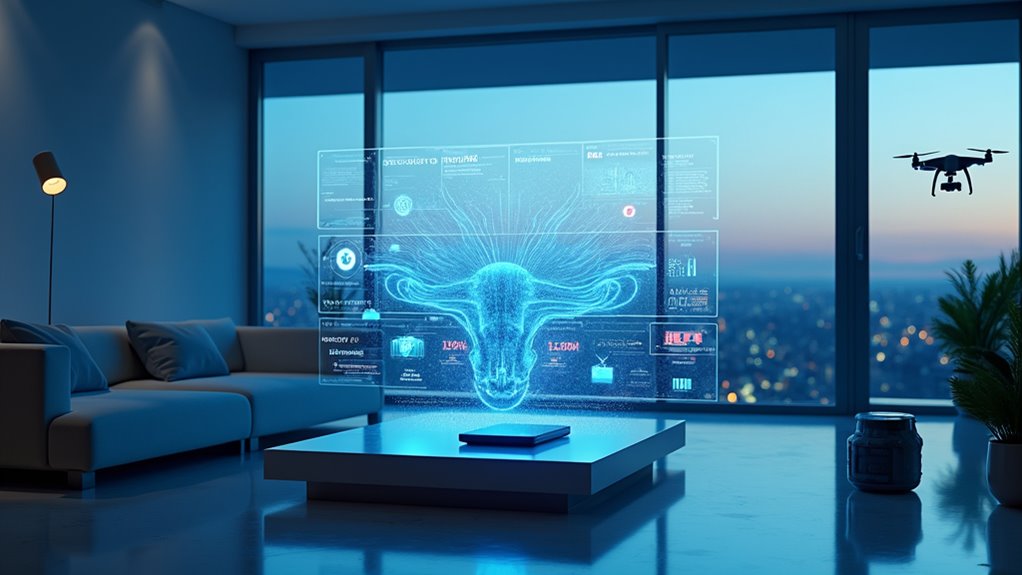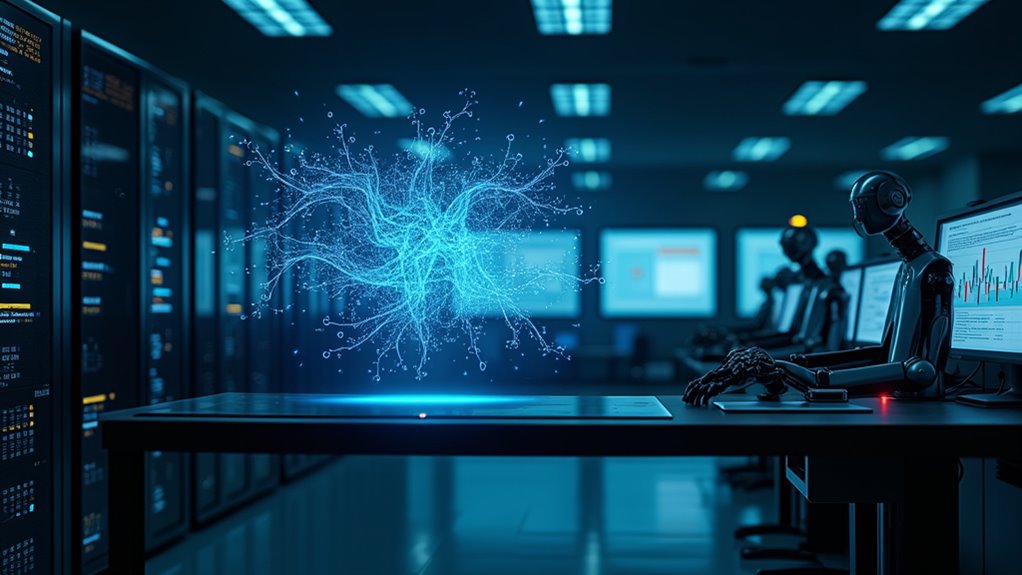Netflix and Amazon’s AI recommendation systems are eerily good at predicting what users want. These digital mind readers analyze everything – from viewing habits to shopping patterns, creating personalized suggestions that drive a whopping 80% of Netflix views and 35% of Amazon purchases. Using neural networks and deep learning, the systems constantly evolve, getting smarter with each click. Think they’re just simple suggestion boxes? There’s way more beneath that algorithmic surface.
While most streaming viewers mindlessly scroll through endless rows of content, sophisticated AI engines are frantically working behind the scenes to predict their next binge-worthy obsession. These aren’t your grandmother’s simple suggestion boxes – we’re talking about complex systems that analyze everything from what you watch to how long you spend deciding what to watch. Yeah, they’re watching you watch them.
Netflix’s recommendation system is particularly obsessive about details. It tracks every pause, every rewind, and every rage-quit from a show you hate-watched. The result? A staggering 80% of Netflix content is discovered through these personalized recommendations. Their two-tiered ranking system combines everything from your viewing history to the exact moment you gave up on that documentary about competitive cheese-rolling. Since launching in 2000, the platform has revolutionized how we discover content through data science.
Netflix tracks your every streaming move, turning your guilty pleasures and ragequits into eerily accurate content suggestions.
Amazon’s not far behind in the recommendation game. They’ve evolved from basic collaborative filtering (you know, the “people who bought this also bought that” stuff) to something far more sophisticated. Their system now understands your style preferences and brand loyalties. It’s like having a personal shopper who never sleeps and remembers every single thing you’ve ever clicked on. The company relies heavily on matrix factorization to uncover hidden patterns in user preferences. With the explosion of big data, these systems have become increasingly powerful at analyzing complex customer behavior patterns.
The real magic happens in the machine learning departments of these tech giants. Neural networks, reinforcement learning, and deep learning algorithms work together like a digital brain, processing massive amounts of data to figure out what you might want to watch or buy next. These systems are constantly learning, adapting, and sometimes failing spectacularly – because let’s face it, no algorithm is perfect at predicting human whims.
Netflix takes it even further with AI-generated thumbnails tailored to your preferences. That’s right – different users might see different images for the same show, all because the AI thinks it knows what will make you click. It’s a bit creepy, but it works.
Between Netflix’s viewing habits analysis and Amazon’s purchase pattern tracking, these recommendation systems have become so integral to their business models that they’re practically running the show. Literally.








